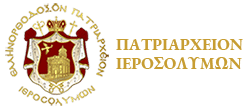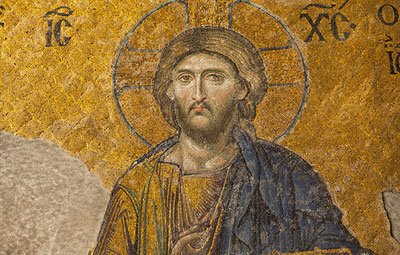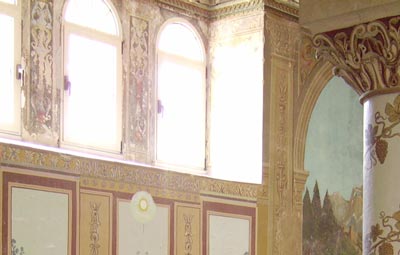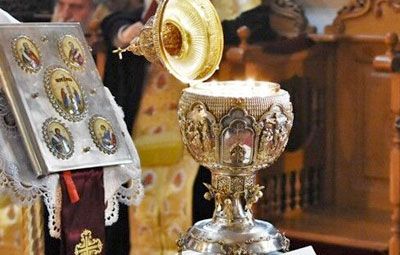Church Services according to Sylvia
The daily Church services used to start at the first hours after midnight; after the first rooster’s crow the gates of the Church of the Resurrection, the Martyrdom Temple and the Temple of the Cross would open for the monks and the maidens as well as the lay people to have an all-night vigil. The midnight office was comprised of psalms and antiphons chanted by the monks and prayers read by the on duty Presbyters and at dawn they chanted the Matins Hymns – as Sylvia calls them – which were according to some people parts from David’s psalms, such as “In the morning Lord you hear my voice…in the morning I lay my requests before you and wait expectantly” (psalm 5), “in your light we shall see light” (psalm 36), “send me your light and your faithful care” (psalm 43), “I will awaken the dawn” (psalm 57), “in the morning my prayer comes before you” (psalm 88), “satisfy us in the morning with your unfailing love, that we may sing for joy and be glad all our days” (psalm 90) and other psalms with similarly related content. If therefore there was chanting of praises, they were either taken from David’s psalms, or they were prophesies about the Lord’s Resurrection, the Sun of Justice, such as “the stone that the builders rejected, has become the cornerstone…this is the day that the Lord has made….blessed is He that cometh in the name of the Lord” (psalm 118). During these Matins’ psalms the Bishop of Jerusalem would come to the church, but Sylvia mentions neither if he celebrated the Liturgy on a daily basis (and not only on Wednesday, Friday, Saturday, Sunday and on festal days), nor what was the core of the Matins service on the days that the Liturgy was not celebrated. Moreover, on the daily schedule, apart from the Midnight office and Matins, there were the 6th Hour around noon and the 9th Hour around 3pm, with the presence of the Bishop in the Church of the Resurrection, who would read prayers for the faithful alongside the monks’ chanting. Around the 4th hour of each day there was the Lychnikon office (office with lit oil lamps), they lit the oil lamps using the ever-lit light which was kept on the Holy Sepulchre, sang Vespers’ psalms and small antiphons, and the Bishop was present together with the presbyters. At the end of the praises they stood in front of the entrance of the Holy Sepulchre while one of the deacons was commemorating names of the faithful and the children’s choir was singing “Kyrie eleison”. Afterwards the Bishop was praying first of all for all Christians, secondly for the Catechumens and thirdly for the faithful, and then in a procession they would go to the Cross – while the whole Church was brightly lit – and similarly they prayed for the catechumens and the faithful, everybody received the blessing from the right hand of the Bishop and left. Such were the daily services during the weekdays, on Saturday night however, all people gathered in the Basilica of the Resurrection just before the third crow of the rooster, as there was the custom never to open the gates of the Church before that time. Praises and antiphons intermitted by relevant prayers were sung and read for all lay people and the monks during these night hours and at the time of the first rooster’s crow the Bishop would come to the Church of the Resurrection which was already brightly lit. One of the presbyters sang a psalm while the people were reciting the verses and a prayer followed; this procedure was followed twice and then they commemorated the names of the faithful. During that time the Bishop was praying inside the Holy Sepulchre and the whole atmosphere was very sentimental and contrite as Saint Cyril notes in his catecheses. After the psalms and the prayers, standing at the Holy Sepulchre, the Bishop would read the Gospel of the Resurrection in deep devoutness, and all the people were deeply touched. Afterwards the Bishop would go to the Temple of the Cross followed by the congregation; he would say a prayer for all faithful people, give his blessing and let them go. The monks of the Holy Sepulchre and the clergy who regularly kept vigils, alongside with lay people who wished to stay, remained in the Temple until morning singing praises and antiphons by the Holy Tomb. Around the 8th or 9th hour of Sunday, the Bishop with the presbyters would go to Golgotha to celebrate the Liturgy for the catechumens. After the reading of the Scriptures and the preaching of the Divine Word, everybody apart from the catechumens left Golgotha and went to the Resurrection which was the place to celebrate the Liturgy for the faithful. Sylvia does not describe the Liturgy because both in the East and the West there was one and only Liturgy with minor external differences. She notes the different parts of the Liturgy which coincide with the Liturgy of the Church of Jerusalem in the 4th century, which has also been described by Saint Cyril and it is the oldest apostolic Liturgy of Saint James.
The feast of Epiphany which indicates not only the birth of our Lord Jesus Christ but also His appearance in the river Jordan as God, and because of this, the two feasts – Christmas and Epiphany – were celebrated together until the end of the 4th century, by which time they were separated. In Jerusalem this separation came some time later, as it is shown by Cosmas Indikopleustos in the 6th century, who says “…the Fathers in Jerusalem have made the birth of Epiphany…” and indeed, while Sylvia was writing, the feast of Epiphany was celebrated together with Christmas in Jerusalem on 6th January; Sylvia also gives the information that the festal celebrations were similar to those for Easter or Pentecost and lasted for 8 days. The feast was celebrated with a night vigil in the Nativity cave in Bethlehem by the Bishop of Jerusalem before the city of Bethlehem had had an appointed Bishop. Simultaneously the feast was celebrated in the other shrines with the presence of a multitude of people; in the first three days in Golgotha, the fourth day on the Mount of Olives, the fifth in Bethany, the sixth in Zion, the seventh in the Church of the Resurrection and the eighth in the monastery of the Cross. During these 8 days the Bethlehem monks were performing litanies and special prayers in the Nativity Cave. After these feasts, on 14th February they celebrated the feast of Ypapante (The Lord’s Meeting in the Temple). This feast was initially celebrated only in Jerusalem and it was adopted in the West in the 5th century and in the East in the beginning of the 6th. On that day in the Church of the Resurrection the presbyters and the Bishop were reading the Gospel of the day, and celebrated the Liturgy following a similar to Easter church order, which was extremely festal as it still is today.









